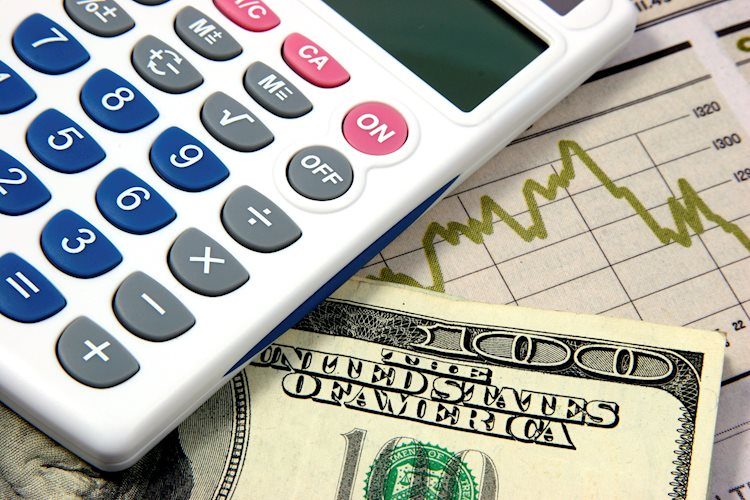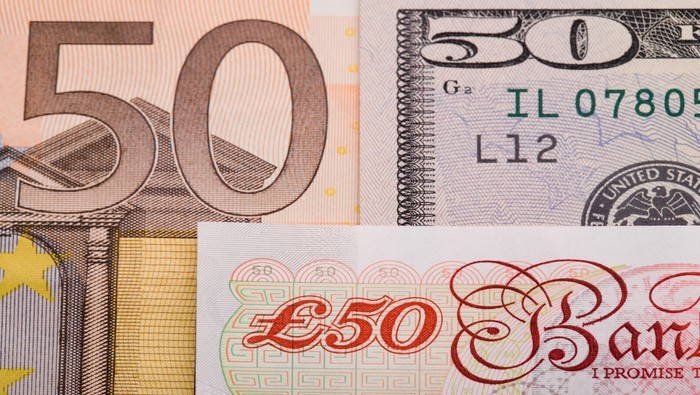Markets are starting to brush off the miss on US PMI data.
The US Dollar Index heads back to 106.00 ahead of US Durable Goods data.
The US Dollar (USD) is trying to recover on Wednesday after trading firmly in the red on Tuesday. The miss on the US Purchasing Managers Index (PMI) for both the Services and Manufacturing sectors triggered a sell-off which extended to Wednesday’s Asian trading session. With the start of the European session, the dust seems to settle and seem to be considering the data miss as a one-off. Going forward, the US Gross Domestic Product (GDP) data on Thursday and the US Personal Consumption Expenditures (PCE) Price Index release on Friday will drive the next moves for the US Dollar.
On the economic data front, Wednesday’s calendar is relatively light but some data could be moving markets and the DXY US Dollar Index again. Durable Goods Orders data are due to be released, and after the PMIs disappointment, more downbeat numbers could extend doubts over the US exceptionalism. Depending on how far data would undershoot or deteriorate, a June cut might even be back on the table again by next week.
The Indonesian Central Bank has raised its key policy rate from 6.00% to 6.25% while markets were looking for a hold or a rate cut.
Chinese building conglomerate Country Garden has extended all its Yuan Bonds in order to avoid a local default.
The US Senate has passed a $95 billion aid package for Ukraine, Israel and Taiwan.
USD/JPY is ticking up again to 154.90, making a new multi-decade high. Bank of America has warned in a report on Wednesday that a forex intervention might be nearby.
The weekly Mortgage Bankers Application Index came in at -2.7%, from a 3.3% increase last week.
At 12:30 GMT, the preliminary Durable Goods print for March will be released:
Headline orders grew by 1.3% in February, with no forecast for March..
Orders without transportation, a widely followed indicator by markets, are expected to increase at a steady rate of 0.3%.
The US Treasury is heading to markets to allocate a 5-year Note.
It is another green day in equity markets, with Asian indexes broadly up by 2% and both European equities and US indices futures up by 0.50%.
The CME Fedwatch Tool suggests June will still be a no-change to the monetary policy rate for the Federal Reserve by 84.8%, with September bearing a 46.7% probability for a rate cut against 31.6% for unchanged.
The benchmark 10-year US Treasury Note trades around 4.62%, near the low for this week.
The US Dollar Index’s (DXY) recent rally broadly comes from the staggering US economy, which has been relentlessly printing positive economic numbers. Tuesday’s PMI numbers came in below estimates for the first time since last year, but investors seem to be taking this miss as a one-off rather than a sudden shock. Markets will want to await further confirmation in the data points from this week and possibly even next week before heading back to pricing in a rate cut for June.
On the upside, first 105.88 (a pivotal level since March 2023) needs to be recovered again before targeting the high of April 16 at 106.52. Further up and above the 107.00 round level, the DXY Index could meet resistance at 107.35, the October 3 high.
On the downside, 105.12 and 104.60 should also act as support ahead of the 55-day and the 200-day Simple Moving Averages (SMAs) at 104.35 and 104.05, respectively. If those two are unable to catch the falling knife price action, the 100-day SMA near 103.70 is the next best candidate.
In the world of financial jargon the two widely used terms “risk-on” and “risk off” refer to the level of risk that investors are willing to stomach during the period referenced. In a “risk-on” market, investors are optimistic about the future and more willing to buy risky assets. In a “risk-off” market investors start to ‘play it safe’ because they are worried about the future, and therefore buy less risky assets that are more certain of bringing a return, even if it is relatively modest.
Typically, during periods of “risk-on”, stock markets will rise, most commodities – except Gold – will also gain in value, since they benefit from a positive growth outlook. The currencies of nations that are heavy commodity exporters strengthen because of increased demand, and Cryptocurrencies rise. In a “risk-off” market, Bonds go up – especially major government Bonds – Gold shines, and safe-haven currencies such as the Japanese Yen, Swiss Franc and US Dollar all benefit.
The Australian Dollar (AUD), the Canadian Dollar (CAD), the New Zealand Dollar (NZD) and minor FX like the Ruble (RUB) and the South African Rand (ZAR), all tend to rise in markets that are “risk-on”. This is because the economies of these currencies are heavily reliant on commodity exports for growth, and commodities tend to rise in price during risk-on periods. This is because investors foresee greater demand for raw materials in the future due to heightened economic activity.
The major currencies that tend to rise during periods of “risk-off” are the US Dollar (USD), the Japanese Yen (JPY) and the Swiss Franc (CHF). The US Dollar, because it is the world’s reserve currency, and because in times of crisis investors buy US government debt, which is seen as safe because the largest economy in the world is unlikely to default. The Yen, from increased demand for Japanese government bonds, because a high proportion are held by domestic investors who are unlikely to dump them – even in a crisis. The Swiss Franc, because strict Swiss banking laws offer investors enhanced capital protection.
Share:
Feed news
Information on these pages contains forward-looking statements that involve risks and uncertainties. Markets and instruments profiled on this page are for informational purposes only and should not in any way come across as a recommendation to buy or sell in these assets. You should do your own thorough research before making any investment decisions. FXStreet does not in any way guarantee that this information is free from mistakes, errors, or material misstatements. It also does not guarantee that this information is of a timely nature. Investing in Open Markets involves a great deal of risk, including the loss of all or a portion of your investment, as well as emotional distress. All risks, losses and costs associated with investing, including total loss of principal, are your responsibility. The views and opinions expressed in this article are those of the authors and do not necessarily reflect the official policy or position of FXStreet nor its advertisers. The author will not be held responsible for information that is found at the end of links posted on this page.
If not otherwise explicitly mentioned in the body of the article, at the time of writing, the author has no position in any stock mentioned in this article and no business relationship with any company mentioned. The author has not received compensation for writing this article, other than from FXStreet.
FXStreet and the author do not provide personalized recommendations. The author makes no representations as to the accuracy, completeness, or suitability of this information. FXStreet and the author will not be liable for any errors, omissions or any losses, injuries or damages arising from this information and its display or use. Errors and omissions excepted.
The author and FXStreet are not registered investment advisors and nothing in this article is intended to be investment advice.





